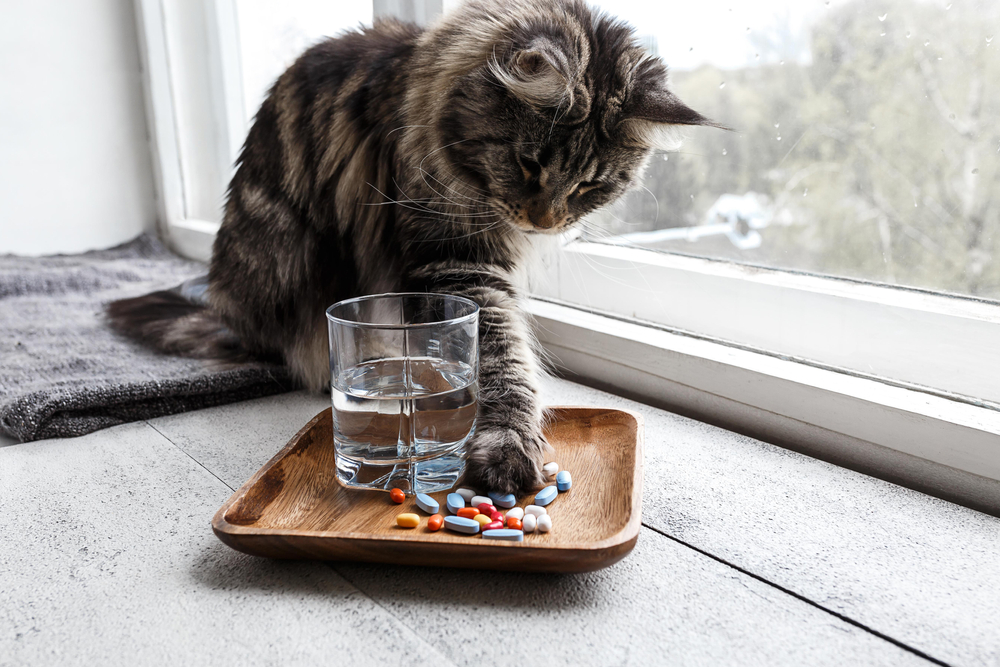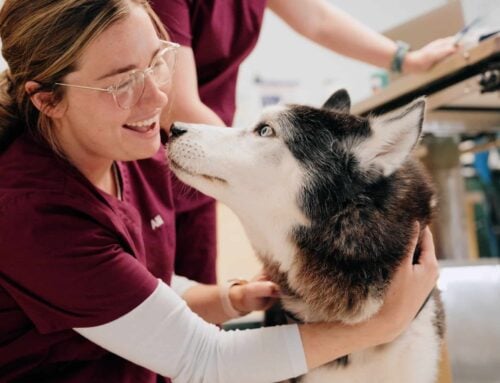Preparing your home for a new pet is a lot like preparing for a baby. Dogs and cats are naturally curious, impulsive, and—like infants—don’t always make safe choices. So, you must ensure their environment is as hazard-free as possible.
As a prospective or new pet owner, you’ve got a lot on your to-do list. That’s why our Shuler Veterinary Clinic team, with our combined years of experience and expertise, has created this room by room guide to pet-proofing your home.
Why you need to pet-proof your home
Every day, veterinary personnel and emergency teams perform life-saving treatments on pets who are suffering from serious injury or illness. Sadly, many of these accidents occur at home. Worse still, most are entirely preventable.
Pet-proofing is the act of making an area safe for dogs, cats, and other pets by removing inherently harmful items (e.g., toxins, electrical cords) and securing or blocking access to those that could threaten pets when they interact (e.g., choking hazards, open gates or windows).
Defining the space—how crate training and barriers keep pets safe
Many pet owners cringe at the idea of confining their pet, but confinement such as a crate, exercise pen, or a small room secured with a pet gate is the best way to ensure your unsupervised pet’s safety. Accepting confinement is also an important pet life skill during emergencies, veterinary care, grooming, and boarding.
Determine where your new pet will spend most of their time during their first few months at home—this will be their “home base” where you’ll station their crate, pen, and resources. This area should be completely secure and contain only your pet’s essential items (e.g., bed, litter box, water, food, toys). Position the safe space in a high-traffic area where you can monitor and interact with your pet.
Safety inspection—pet-proofing room-by-room
Once you’ve set up your pet’s safe zone, it’s time to go room-by-room. Although your pet ideally won’t have access to these spaces for some time—especially unsupervised—you should plan for every possible scenario. We recommend that you ensure you thoroughly inspect your home by getting on your hands and knees for a pet’s-eye view of each area.
- Kitchen — The kitchen is the heart of the home, but also is a hotbed for pet hazards. Take these steps to make your kitchen warm and safe:
- Store trash cans behind a barrier (e.g., pantry door, cabinet)
- Keep countertops tidy
- Return ingredients to their designated storage
- Store cleaning supplies in a closed cabinet
- Replace candles with battery-operated votives
- Push items back from counter edges
- Keep out of reach toxic ingredients, including chocolate in all forms (e.g., baking chocolate, cocoa powder), raisins, grapes, macadamia nuts, onions, garlic, leeks, alcohol, yeast dough, caffeine, or sugar-free foods containing xylitol.
- Living room — Your living room is a place for comfort, not calamity. Secure or remove the following items to provide a cozy safe haven:
- Electrical cords
- Plants and floral arrangements
- Curtain and blind cords
- Hanging or dangling decorations
- Breakable items and small toys
- Hobby supplies (e.g., paint, sewing accessories, puzzle pieces)
- Remotes and game controllers
- Catch-all baskets or dishes that may contain small choking hazards (e.g., keys, coins, batteries)
- Essential oils and liquid potpourri, which can be toxic
- Bathroom — Don’t overlook these small spaces, which often hide big problems for pets. Pet-proof your powder room with these steps:
- Keep medications in closed containers
- Identify and secure xylitol-containing products (e.g., mouthwash, toothpaste)
- Unplug and store flat irons and hair dryers
- Organize and store small hair accessories (e.g., pins, ties) out of reach
- Empty trash cans frequently and keep them inside a cabinet
- Use a pet-safe hamper for dirty laundry
- Remove plug-in air fresheners and deodorizers
- Install a pet gate to keep interlopers out of the litter box
- Bedroom — This peaceful space may be filled with pet safety nightmares. Ensure you have sweet dreams by addressing or securing potential problems. Recommended actions include:
- Removing small choking hazards from the nightstand (e.g., jewelry, beauty products, book light)
- Storing medications and supplements in a closed container
- Securing tall shelves to prevent toppling
- Ensuring plants are non-toxic
- Unplugging or covering electrical cords
- Replacing candles with battery operated votives
- Relocating books, candles, and stuffed animals
- Placing small electronics in a drawer
- Yard and garage — Don’t forget to look beyond your indoor spaces when pet-proofing your home. The yard and garage feature hazards with the potential for life-threatening injury or toxicity. Strategies for securing these areas include:
- Checking fences and gates for gaps, broken latches, or damage
- Securing doors to prevent accidental escape
- Removing poisonous rodent and mouse baits
- Replacing toxic antifreeze with a pet-safe propylene glycol-based alternative
- Cleaning spills and storing trash in secure containers
- Sweeping floors and picking up any sharp items (e.g., loose nails, screws, metal shards)
- Relocating the grill to a pet-free area
- Installing fencing around your pool, or adding a pet ramp to prevent drowning
Pet-proofing can feel like an enormous task, but remembering the ultimate goal—providing your new furry friend with a safe place to call home—can help you stay focused and motivated.
For more expert recommendations on how to welcome your new pet or to schedule their first wellness visit, contact Shuler Veterinary Clinic.









Leave A Comment